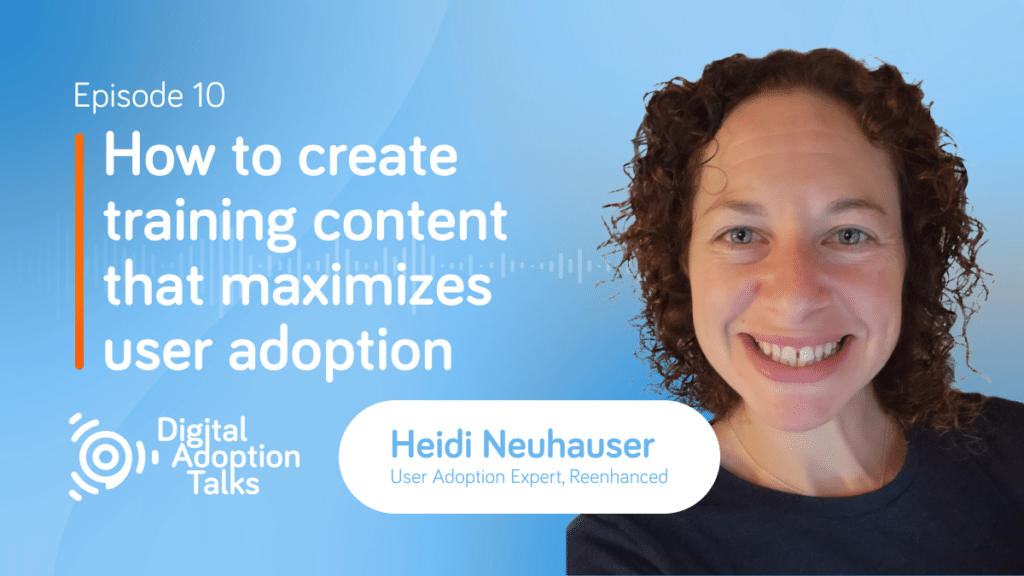Content creators drive user adoption through problem-based content creation. Learn how the role of content creators as shapers of digital adoption is expanding and changing how they create training content.
Listen to the podcast to learn what the role of content creators is like for digital adoption now and in the future. Including:
- Why user adoption strategies and content should go hand-in-hand
- How to create training content that compliments your user adoption strategy
- Which kind of training content keeps users engaged
- What partners can do better to support digital adoption with their current customers they’ve already deployed and in future projects.
Heidi Neuhauser (CEO Reenhanced), joins hosts Rick McCutcheon and Joachim Schiermacher. Neuhauser adds unique insight into how people not only use Dynamics CRM, but also how users embrace it or reject it and why. At her company, she specializes in building strategies to reach users, creating training content based on their needs and problems. Most importantly, she emphasizes that being less technical and more business-minded is always a critical factor in communication strategy.
Plus, don’t miss Heidi’s perspective on how the low-code, no-code platform has opened horizons for citizen developers. Learn how this technology is going to continue to empower citizen developers and what they will be doing more and more of (on their own!) in the future.
